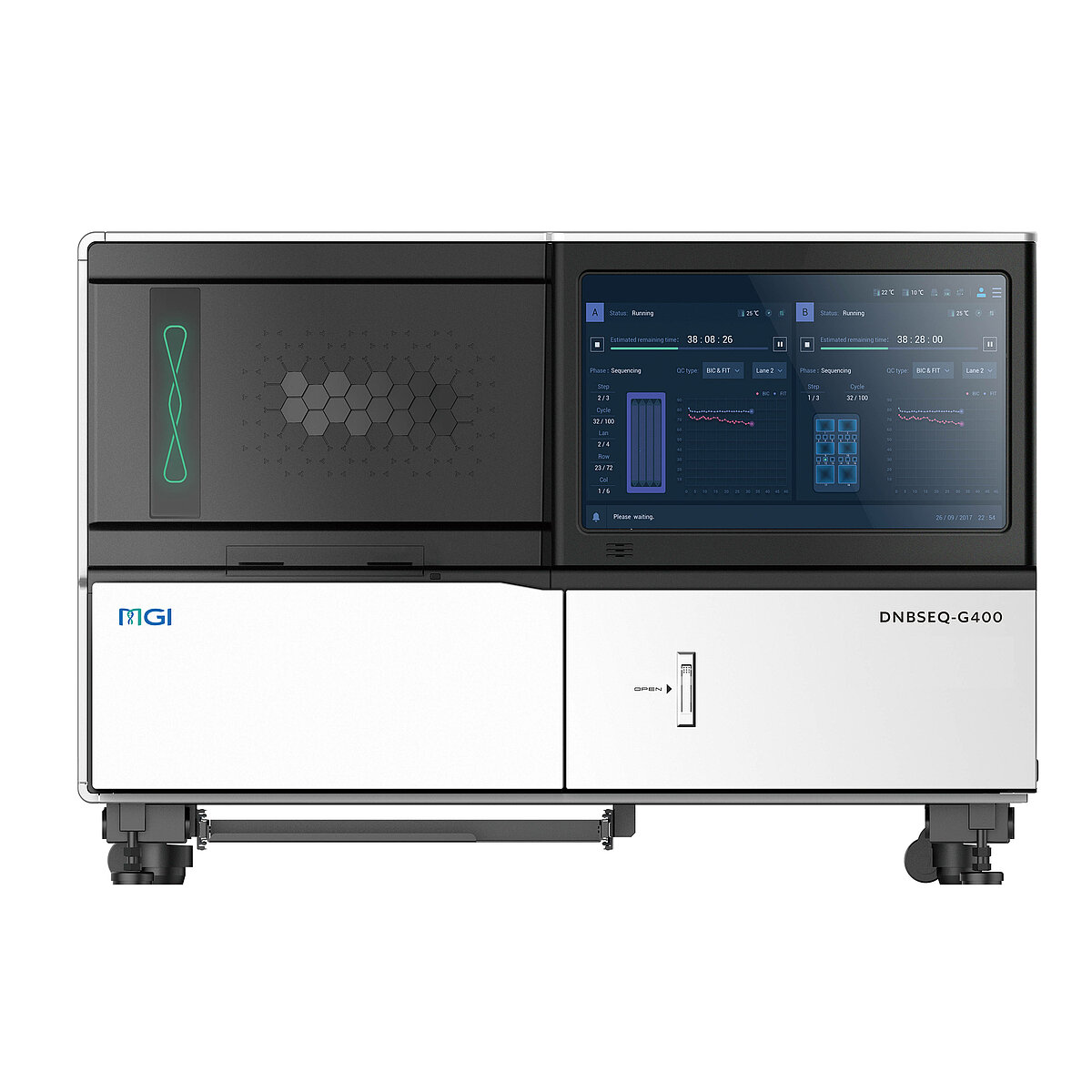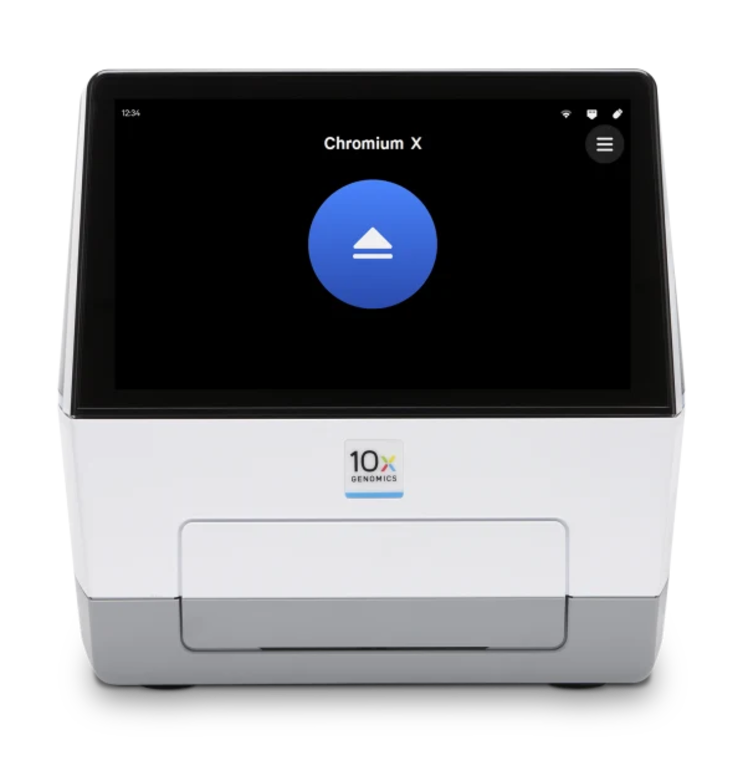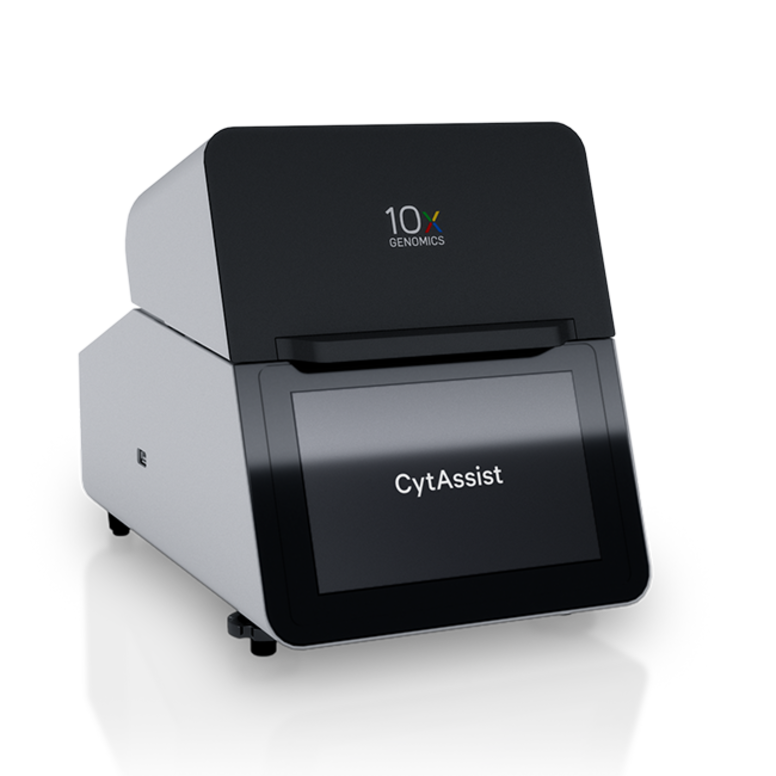
Genomeast
GenomEast
PLATFORM LEADER
With over 20 years of experience, we offer a wide range of services to explore genomes, their expression and regulation, from quality control of starting samples to data analysis. These services are intended for the entire scientific community, national and international, public and private.

The platform is a member of the central core of the France Genomics National Research Infrastructure
The platform is IBISA certified.
Currently equipped with an Illumina NextSeq 2000 and a MGI DNBSEQ-G400 sequencers, we are carrying out projects to analyse :
of the transcriptome :
- RNA-seq
- Single cell RNA-seq (scRNA-seq)
- Spatial transcriptomics
of the epigenome :
- ChIP-seq
- Cut & Run
- MeDIP-seq
- We also have experience in sequencing your ATAC-seq or Cut & Tag libraries
of the genome :
- Targeted regions of the genome (exome, regions of interest)
- Full genome sequencing
multiomics :
- Single Cell Multiome ATAC + Gene Expression
For these projects, we prepare and sequence your libraries, performing quality controls at each step. We can also perform the bioinformatics analysis of your data. We have expertise in a wide variety of applications and have developed dedicated bioinformatics pipelines to analyze the corresponding results.
Alternatively, you can use our sequencing capabilityto sequence your own libraries as long as they are compatible with Illumina technology.
How to submit a project to GenomEast?
Via our web interface
All our services are governed by the general terms and conditions of sale, which take precedence over any conditions of purchase, unless otherwise agreed in writing by us. You can also consult our Data Management Plan.
We regularly share our knowledge and expertise through various courses and training sessions, including:
- The "High Throughput Approaches" course at the Ecole Supérieure de Biotechnologie de Strasbourg (ESBS)
- The "Omics 2" course of the Master 2 Biology-Health, Biomedicine Research course at the University of Strasbourg
- The PhD Program of the IMCBio University Research School in Strasbourg
- The DU "High-throughput sequencing and rare diseases" at the University of Dijon
- The AVIESAN IFB Inserm bioinformatics school
- The organisation of training courses in bioinformatics for high-throughput sequencing with Inserm and the CNRS
Other equipments:
- High-throughput sequencing: iSeq100 (Illumina)
- High-throughput nanofluidics: Chromium Controller (10X Genomics)
- Spatial transcriptomics: GeoMx Digital Spatial Profiler (NanoString)
- Quality control : Varioskan Flash Reader and Qubit Fluorometer (Thermo Fisher), 2100 Bioanalyzer and AATI Fragment Analyzer (Agilent)
- Sonicator : E220 AFA system (Covaris)
- IT Infrastructure : computing power (Dell): 304 cores, storage (Lenovo, GPFS): 750 TB
France Génomique
Our platform has been a partner of the France Genomics network since the initial selection of the project within the framework of the "Investissements d'avenir" in 2011. This network brings together and shares the resources of the main French genomics and bioinformatics platforms.
Fondation maladies rares
Since 2011, we have been one of the partner platforms of the Fondation maladies rares for the implementation of the "GenOmics: high throughput sequencing & rare diseases" programme, which aims to unravel the genetic and molecular basis of rare diseases using high throughput sequencing.
IBiSA and CoRTecS
Since 2008, we have been part of the national network of platforms and resource centers in biology, health, and agronomy of the GIS IBiSA, and since 2021, part of the regional CoRTecS network, which brings together the scientific research and service platforms of the University of Strasbourg.
New applications and technologies
Over the past years, we have gained a strong expertise in single-cell sequencing technologies (Research Expertise 2021 prize from the University of Strasbourg). We further implement new applications each year. At the same time, we are implementing two complementary technologies dedicated to spatial transcriptomics: Visium (10X Genomics) and GeoMx (NanoString).
Publications
-
2023
-
Mitotic chromosome condensation resets chromatin to safeguard transcriptional homeostasis during interphase
- Lucía Ramos-Alonso
- Petter Holland
- Stéphanie Le Gras
- Xu Zhao
- Bernard Jost
- Magnar Bjørås
- Yves Barral
- Jorrit Enserink
- Pierre Chymkowitch
Proceedings of the National Academy of Sciences of the United States of America ; Volume: 120
-
Proprioceptors-enriched neuronal cultures from induced pluripotent stem cells from Friedreich ataxia patients show altered transcriptomic and proteomic profiles, abnormal neurite extension, and impaired electrophysiological properties
- Chiara Dionisi
- Marine Chazalon
- Myriam Rai
- Céline Keime
- Virginie Imbault
- David Communi
- Hélène Puccio
- Serge Schiffmann
- Massimo Pandolfo
Brain Communications ; Volume: 5
-
Analysis of the P. lividus sea urchin genome highlights contrasting trends of genomic and regulatory evolution in deuterostomes
- Ferdinand Marlétaz
- Arnaud Couloux
- Julie Poulain
- Karine Labadie
- Corinne da Silva
- Sophie Mangenot
- Benjamin Noel
- Albert J Poustka
- Philippe Dru
- Cinta Pegueroles
- Marco Borra
- Elijah K Lowe
- Guy Lhomond
- Lydia Besnardeau
- Stéphanie Le Gras
- Tao Ye
- Daria Gavriouchkina
- Roberta Russo
- Caterina Costa
- Francesca Zito
- ...
Cell Genomics ; Volume: 3 ; Page: 100295
-
The circadian demethylation of a unique intronic deoxymethylCpG-rich island boosts the transcription of its cognate circadian clock output gene
- Nisha Misra
- Manohar Damara
- Tao Ye
- Pierre Chambon
Proceedings of the National Academy of Sciences of the United States of America ; Volume: 120 ; Page: e2214062120
-
Loss of NR5A1 in mouse Sertoli cells after sex determination changes cellular identity and induces cell-death by anoikis
- Sirine Souali-Crespo
- Diana Condrea
- Nadège Vernet
- Betty Feret
- Muriel Klopfenstein
- Erwan Grandgirard
- Violaine Alunni
- Marie Cerciat
- Matthieu Jung
- Chloé Mayère
- Serge Nef
- Manuel Mark
- Frédéric Chalmel
- Norbert B Ghyselinck
Development (Cambridge, England) ; Volume: 150 ; Page: dev201710
-
Hypoxia‐inducible factor 1A inhibition overcomes castration resistance of prostate tumors
- Julie Terzic
- Mohamed A Abu El Maaty
- Régis Lutzing
- Alexandre Vincent
- Rana El Bizri
- Matthieu Jung
- Céline Keime
- Daniel Metzger
EMBO Molecular Medicine ; Volume: 15
-
Super-enhancer-driven expression of BAHCC1 promotes melanoma cell proliferation and genome stability
- Pietro Berico
- Maguelone Nogaret
- Max Cigrang
- Antonin Lallement
- Fatemeh Vand-Rajabpour
- Amanda Flores-Yanke
- Giovanni Gambi
- Guillaume Davidson
- Leane Seno
- Jolian Obid
- Bujamin H. Vokshi
- Stéphanie Le Gras
- Gabrielle Mengus
- Tao Ye
- Carlos Fernandez Cordero
- Mélanie Dalmasso
- Emmanuel Compe
- Corine Bertolotto
- Eva Hernando
- Irwin Davidson
- ...
Cell Reports ; Volume: 42 ; Page: 113363
-
Multi-Omics Data Integration Reveals Sex-Dependent Hippocampal Programming by Maternal High-Fat Diet during Lactation in Adult Mouse Offspring
- Thibaut Gauvrit
- Hamza Benderradji
- Alexandre Pelletier
- Soulaimane Aboulouard
- Emilie Faivre
- Kévin Carvalho
- Aude Deleau
- Emmanuelle Vallez
- Agathe Launay
- Anna Bogdanova
- Mélanie Besegher
- Stéphanie Le Gras
- Anne Tailleux
- Michel Salzet
- Luc Buée
- Fabien Delahaye
- David Blum
- Didier Vieau
Nutrients ; Volume: 15 ; Page: 4691
-
-
2022
-
Polyglutamine-expanded ATXN7 alters a specific epigenetic signature underlying photoreceptor identity gene expression in SCA7 mouse retinopathy
- Anna Niewiadomska-Cimicka
- Antoine Hache
- Stéphanie Le Gras
- Céline Keime
- Tao Ye
- Aurelie Eisenmann
- Imen Harichane
- Michel Roux
- Nadia Messaddeq
- Emmanuelle Clérin
- Thierry Léveillard
- Yvon Trottier
Journal of Biomedical Science ; Volume: 107
-
Istradefylline protects from cisplatin-induced nephrotoxicity and peripheral neuropathy while preserving cisplatin antitumor effects
- Edmone Dewaeles
- Kévin Carvalho
- Sandy Fellah
- Jaewon Sim
- Nihad Boukrout
- Raphaelle Caillierez
- Hariharan Ramakrishnan
- Cynthia van der Hauwaert
- Jhenkruthi Vijaya Shankara
- Nathalie Martin
- Noura Massri
- Agathe Launay
- Joseph Folger
- Clémentine de Schutter
- Romain Larrue
- Ingrid Loison
- Marine Goujon
- Matthieu Jung
- Stéphanie Le Gras
- Victoria Gomez-Murcia
- ...
The Journal of clinical investigation ; Volume: 132 ; Page: e152924
-













